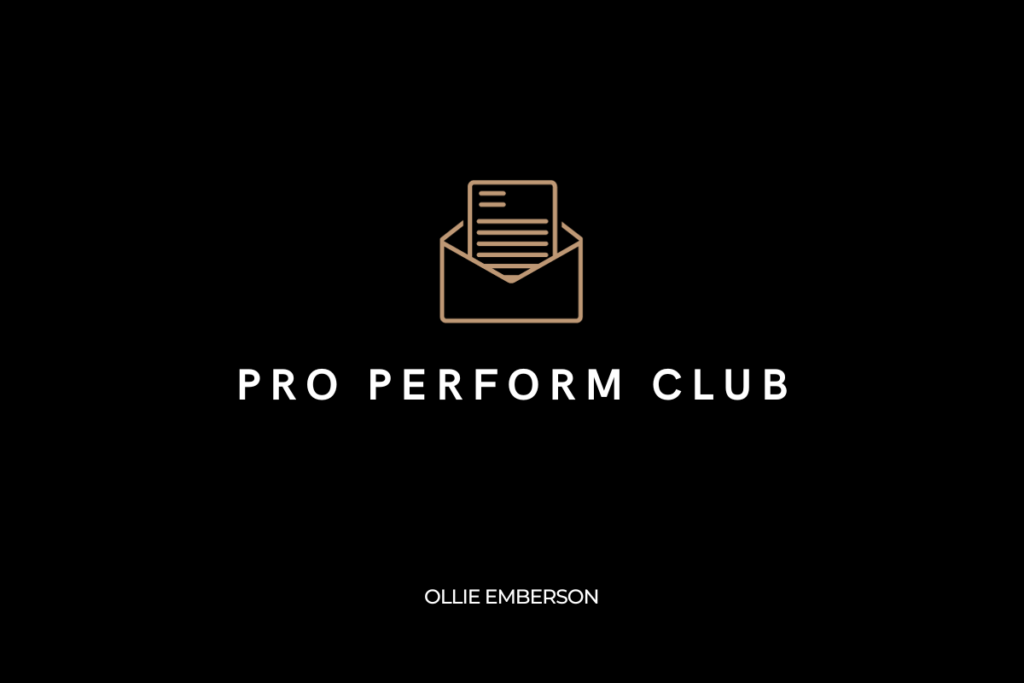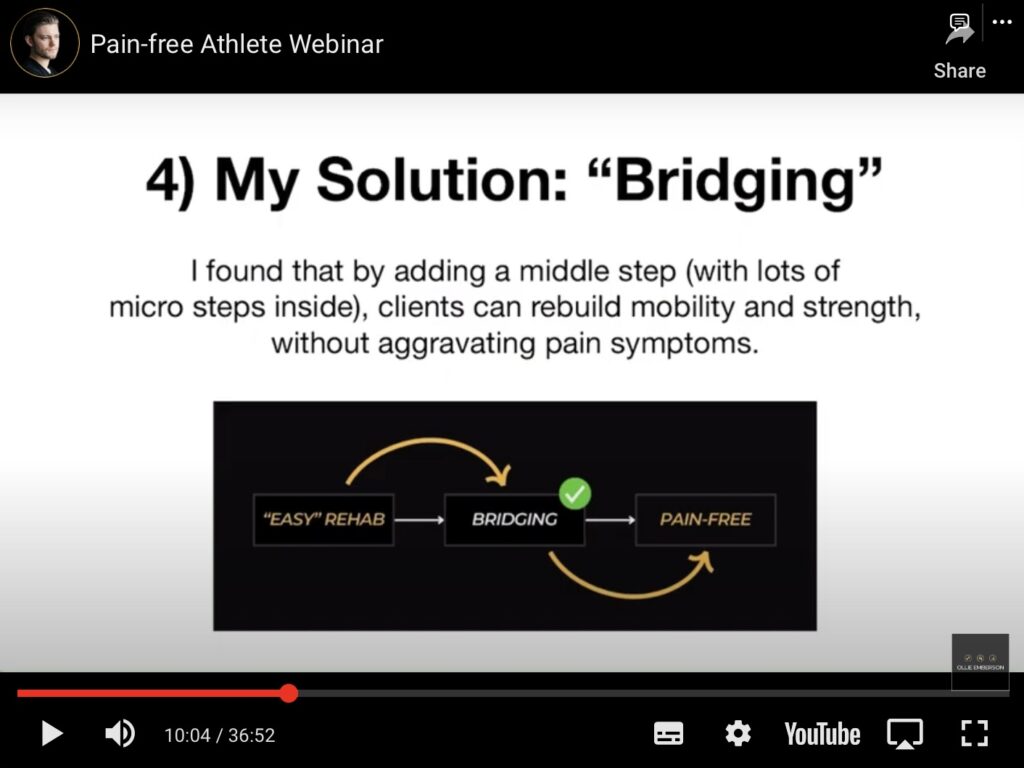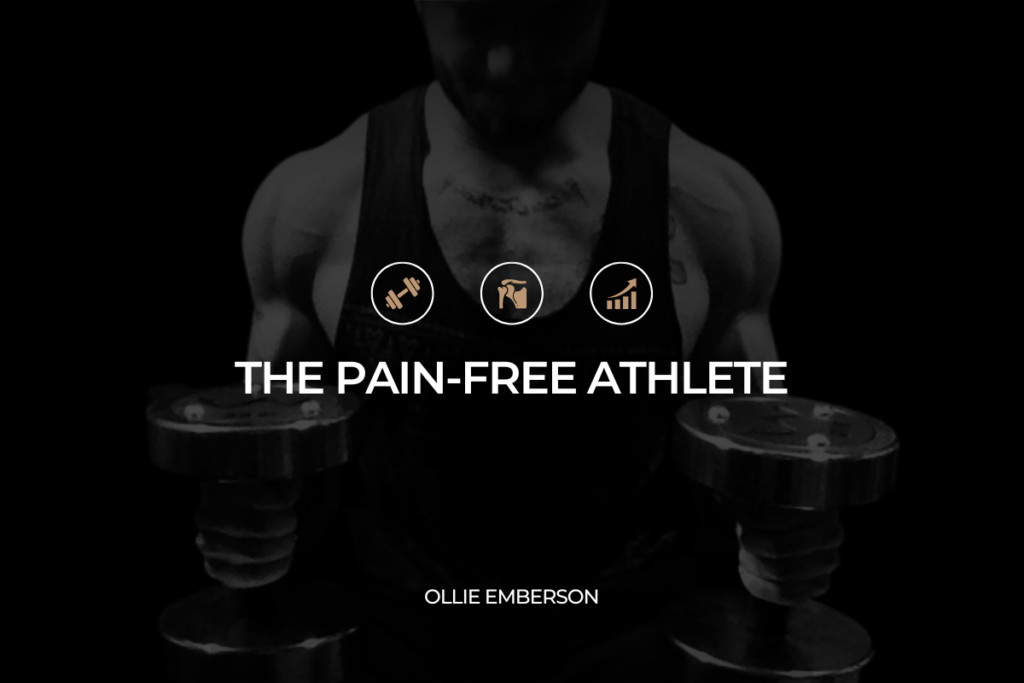An injury is one of the WORST experiences a lifter can go through.
- You lose muscle
- You lose strength
- You lose confidence
- You feel frustrated
And you’re unable to enjoy your workouts that were was once a highlight of your day.
Imagine then, how much worse it gets:
When you’re 6 months down the “injury rehab rabbit hole” – with no results to show for it.
This is the experience most people go through, myself included…
They waste $1000s physiotherapists, osteopaths, chiropractors, and other “specialists”. they waste 100s hours on stretching, ”classic rehab”, acupuncture, massage therapy, graston and other fancy sh*t.
So why is this story so common?
Because many injury rehab methods are quick-fix “band aid” solutions that solve short term symptoms and pain, whilst completely IGNORING the underlying issue.
Today, we’ll explore the 10 BIGGEST rehab mistakes I’ve seen over 8 years as a rehab specialist.
Lets dive in…

Rehab exercise appears to be effective AT first:
Because you’re able to train without pain.
(all be it, at a much lower intensity than you usually would).
The problem here? They enable you to exercise whilst reducing pain symptoms, but they don’t incorporate enough load to drive long-term adaptive change.
And when you decide to add load, the pain you once had- all of a sudden comes back!
A few rehab examples:
- Bodyweight “pendulums”
- Pink 3kg external rotations
- Weird bodyweight stuff
- Magic therabands
Do you think any of these exercises will help you get stronger? (Answer: no) – and that’s a problem, because most pain and injury is caused by weakness.
This is why I ALWAYS prioritise modified strength training… more on that later.
Ps. Here’s another example of a REALLY dumb rehab exercise (explained below) 👇
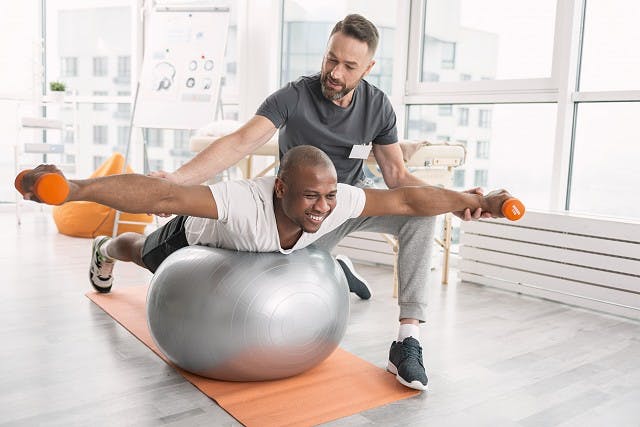
One issue (of many) here is that there’s no support:
He’s training on an unstable surface.
This makes it EXTREMELY difficult to provide a stimulus to the working muscles – which means you’re not going to drive any adaptive change to improve strength or muscle function.

Passive treatments are some of the most popular in the rehab world.
Why?
Because they REDUCE immediate symptoms like pain.
Here’s the problem though… just because you reduce symptoms, doesn’t mean you’re resolving the underlying cause or problem.
A few examples:
- Massage therapy
- Foam rolling
- Joint mobilisations
- Dry Needling
Seeing as most pain, injury and dysfunction is caused by muscle weakness, you need something to build long-term tissue strength – passive treatments do NOT do this.
Ps. Fun fact – muscle knots don’t actually exist (story for another day).

If you visit a rehab specialist (physio, osteo, chiro or PT) and they suggest posture correction…
Fire them.
There’s plenty of research out there to show there is no link between posture and pain.
And here is one example 👇
https://pubmed.ncbi.nlm.nih.gov/19910263/
What’s more, everyones posture is unique due to their structure / anatomy.
A few “posture“ examples to avoid:
- Stretching
- Corrective exercise
- Posture devices
ps. the video below shows why posture correction is flawed,
Along with examples of how your anatomy can vary 👇

People in the rehab industry LOVE their special toys, don’t they?
Problem here is the industry is like any other (eg. Posture) – it provides quick fix, and quite frankly, useless solutions that require little effort on the purchasers part beyond parting with a bit of money.
We’ll get to the problem in a sec, but first…
A few examples:
- Banded Reverse Fly
- Banded Lateral Raise
- Banded Chest Press
So what’s wrong with bands (on their own)? Two things…
Firstly, they only provide challenge in end ranges (where the band is stretched) – and so EVEN if you’re moving through a full range of motion, you’re not challenging it.
Apologies for the messiness, but check out the 2 examples below:
The first being a classic “banded reverse fly” and the second being an exercise I specifically designed…
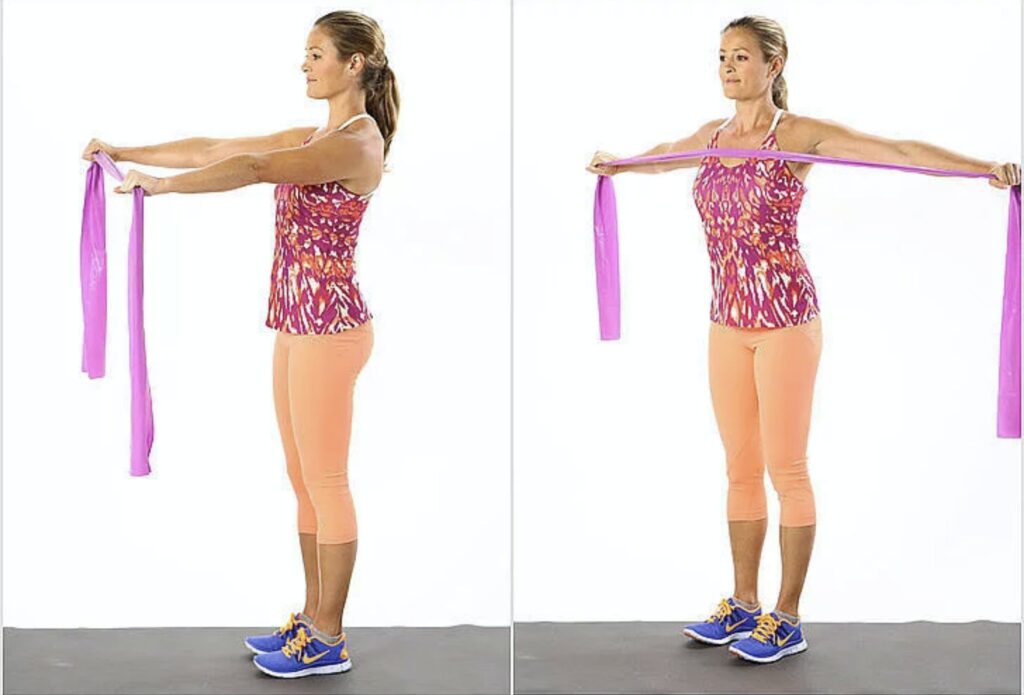
Secondly, whilst we know resistance increases as these bands stretch, what you may not know is they increase a force called “inertia”. Depending on your injury, this can be inconvenient and make pain worse.

“Ah, hello my old frenemy”
To those of you who read my previous stretching article (link below), you will know I’m not a fan of stretching,
Because it does NOT do a lot of what people say it does.
• It doesn’t help you warm up
• It doesn’t help you improve mobility
• It doesn’t help you improve performance
• It doesn’t help you recover from injury
So why do so many specialists use stretching as part of a rehab protocol?
Because it reduces pain (It’s a nervous system thing).
But whilst it temporarily masks your short-term symptoms (it’s nice to get a bit of relief), it won’t improve muscle function, strength or improve your injury if it’s related to weak muscle…
For most rehab you want STRONGER tissue, not LONGER tissue.
Ps. Wanna learn about stretching? go here…

Did you know research shows certain lifestyle factors are linked to chronic pain?
This includes:
- Sleep duration / quality
- Your stress levels
- Your nutrition
Therefore it’s important to ensure these things are dialled in during any rehab protocol… firstly because they could slow the recovery process and secondly because they could be a CAUSOR of your pain!
Because no amount of exercise will rehab you out of those issues.
ps. I wrote this sleep guide for clients a while back (tips on sleep environment, habits and beliefs)
Check it out if you need some inspiration 👇
https://holy-rate-7c5.notion.site/L1-The-Ultimate-Sleep-Guide-4e9580bbf5694507b68b6df0c4a9cb23

During rehab, it’s important to restore muscle function around the affected joint – which means making sure the muscles can contract through a full range (ie. Fully lengthened to fully shortened).
But ”full range of motion” is different for everyone and depends on:
- Bone length
- Joint shape
Because of this, arbitrary ROM phrases (below) can do more harm than good because they use external measures (eg. How far is the barbell from your chest) instead of internal measures (eg. Shoulder mobility).
Examples:
- “Bench Bar To Chest”
- ”Squat Ass To Grass”
- ”Deadlift From Floor”
Lets go deeper on the “ass to grass“ example…
A previous client (Alex) came to me with 12+ months of hip pain – there were a number of issues, but we learned his structure was NOT designed to squat ass to grass (as he only had 90º of hip flexion).
See the difference left to right? 👇
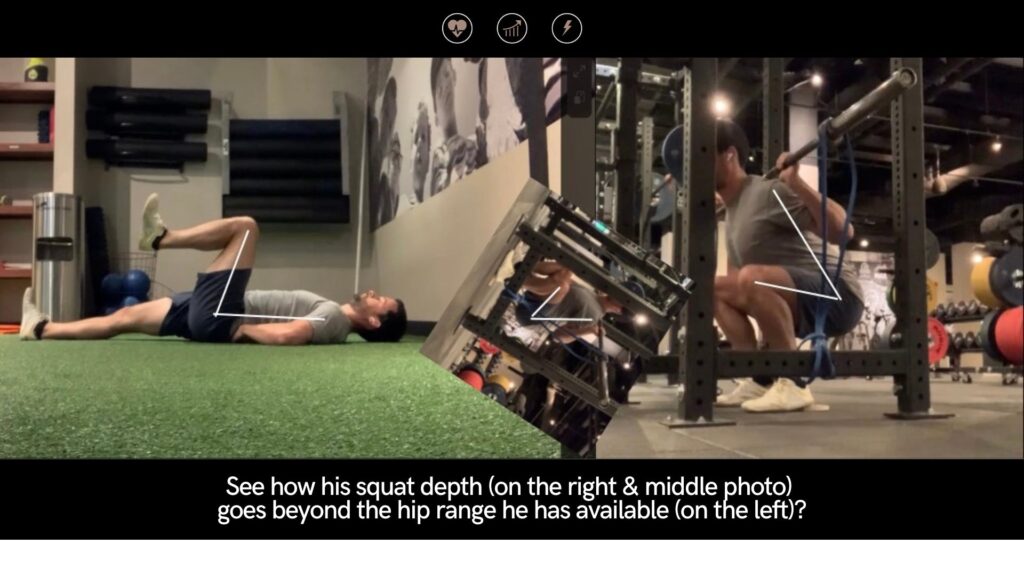
Squatting beyond this point was causing compression in his hip and if he continued, he would have experienced long term issues like chronic pain, nerve impingement and joint damage.
Ps. If you missed it, watch the video above on “posture” – it goes deeper on these points.

Rehab protocols often focus on the problem area without considering other areas of the persons program (Ie. If you have a shoulder injury, your lower body sessions won’t be audited).
I’ve seen this time and time again with clients
And it’s a problem because if you have a shoulder injury – exercises like barbell squats, deadlifts and split squats COULD aggravate your pain or slow down recovery because they place stress on the rotator cuff.
Doesn’t mean you can’t train lower body with a shoulder injury,
Just means you’ll need to do exercises that DON’T put stress on the rotator cuff (eg. Swap out deadlifts, BB squats and split squats for leg extension, leg press, hip extension, hip flexion, hip abduction etc)

You’re less tolerant to volume when you’re injured.
So it makes sense to manage volume per session (by reducing it) in an attempt to reduce your risk of exceeding your tolerance.
But people rarely do this – they ignore volume and focus on training the problem area.
So what would “volume management” look like?
This could mean doing 12 weekly sets over 3 sessions instead of 12 weekly sets over 2 sessions – it’s the same weekly volume, but 33% less volume per session (Ie. 4 sets/session instead of 6 sets/session).
ps. For any injury, I always recommend training the problem area more frequentoy anyway – becaue by doing so, you expose muscles to a stimulus more frequently, which means quicker adaptation and skill development.

I see this one ALL the time.
Someone gets injured, and they rest the area for a number of months.
(Particularly common post-surgery).
Issue with this – it doesn’t fix the underlying problem.
So it’ll still be there when you get back in the gym and start training properly – AND muscles become weaker / more deconditioned as time goes on.
It’s important not to exceed your tolerance or train through serious pain,
But it’s almost as bad (and frustrating) to rest the area and not do anything – movement is medicine 🙂

Alright, so we’ve covered what doesn’t work.
But what can you do (right now),
To fix your shoulder pain and return to training 100% pain-free?
Here’s a link to my FREE guide that includes the most effective shoulder rehab exercises I use with my 4-figure clients…
Hope it helps 🙂
Until next time my friend,
— Ollie E.



